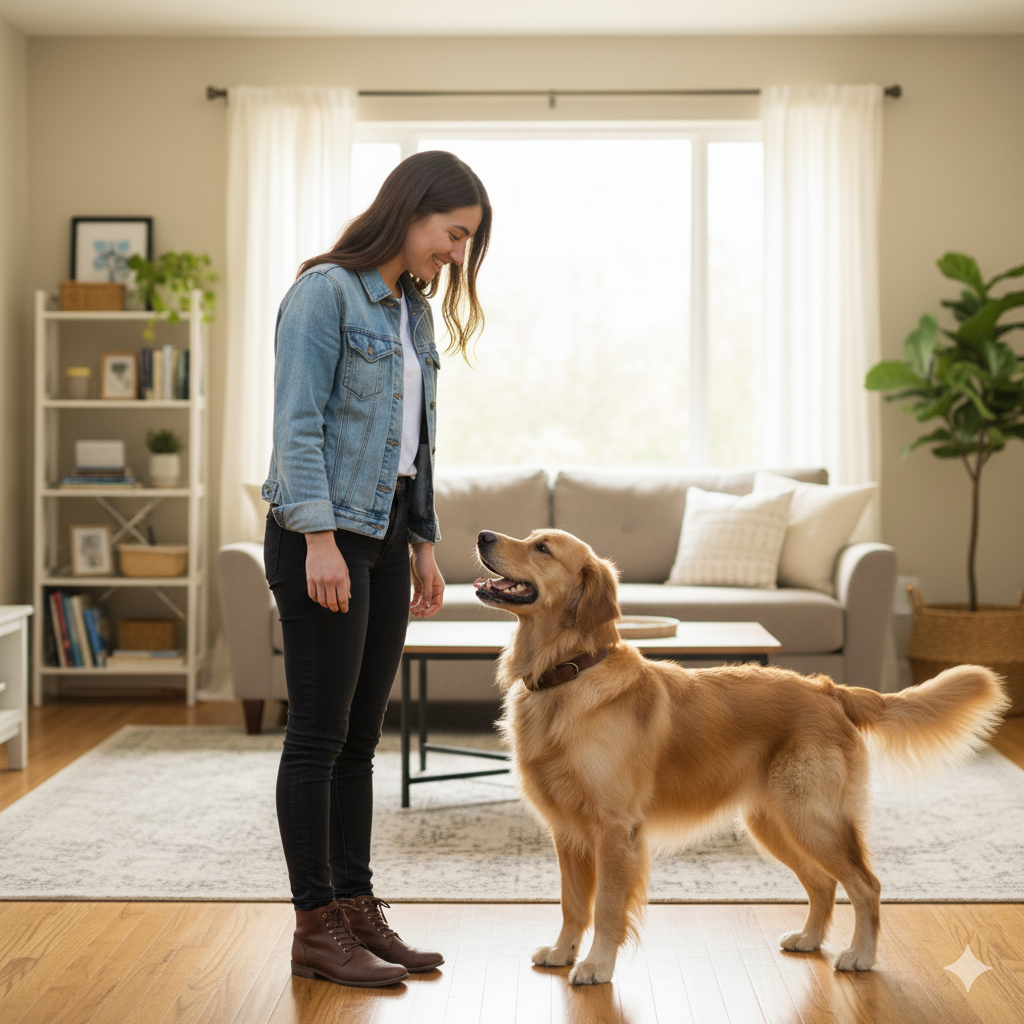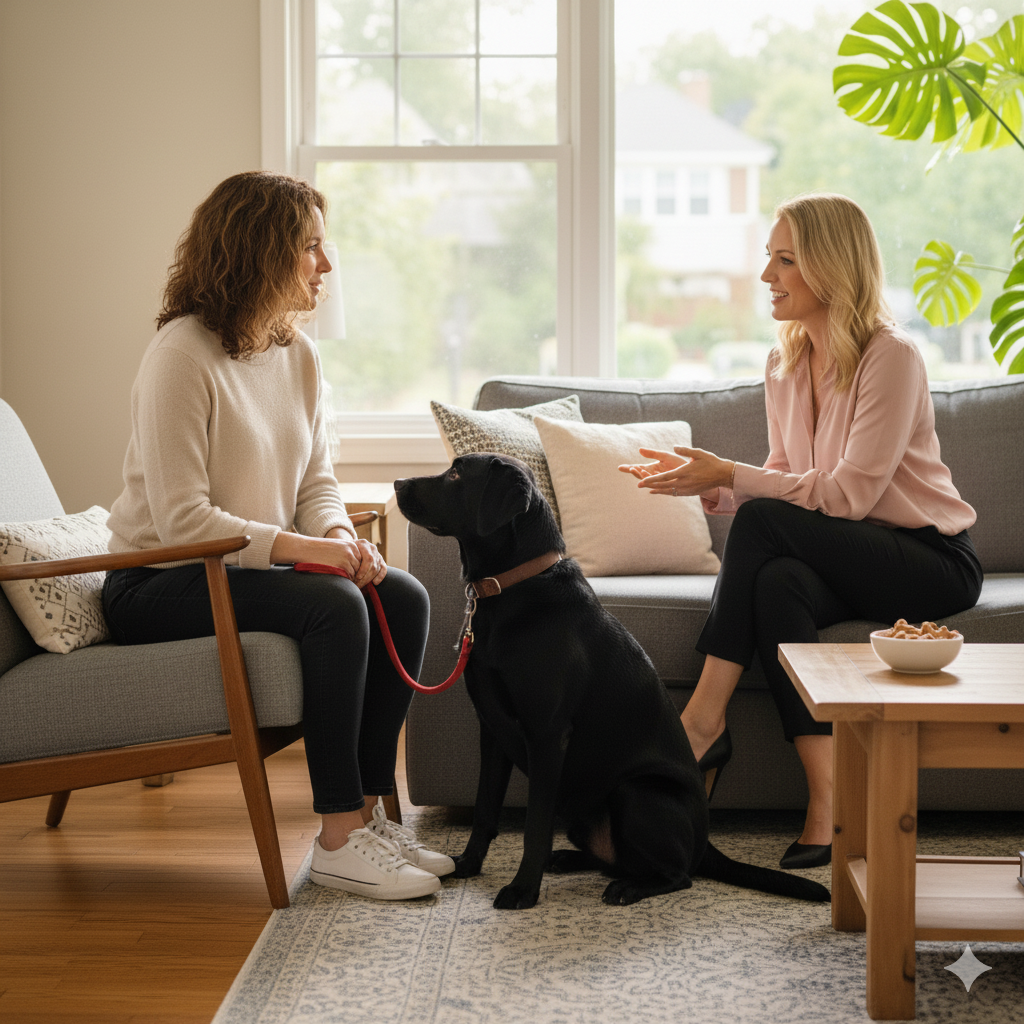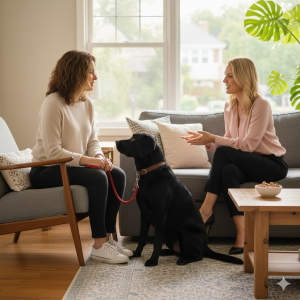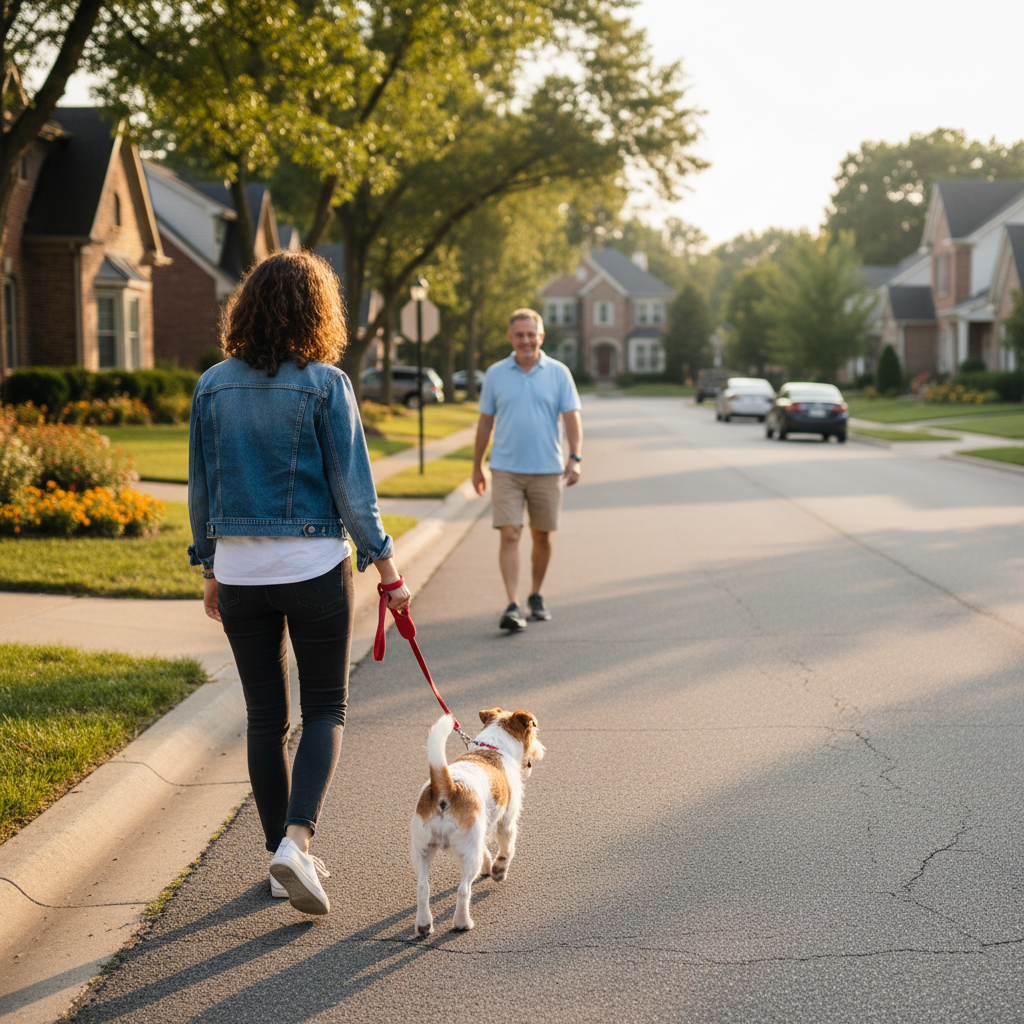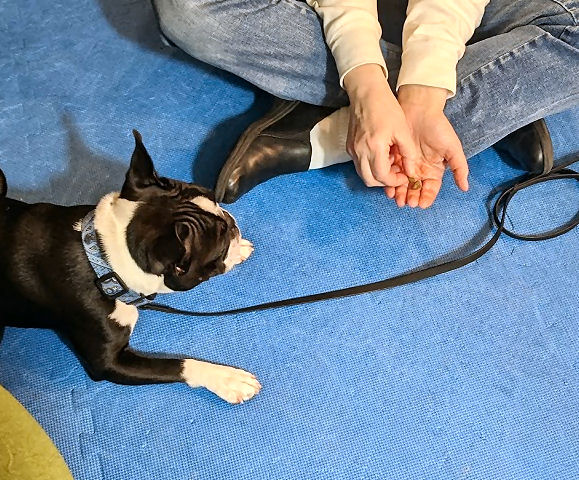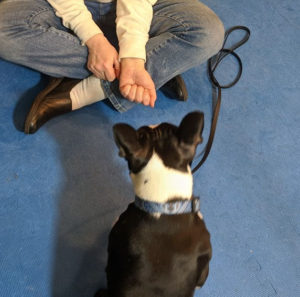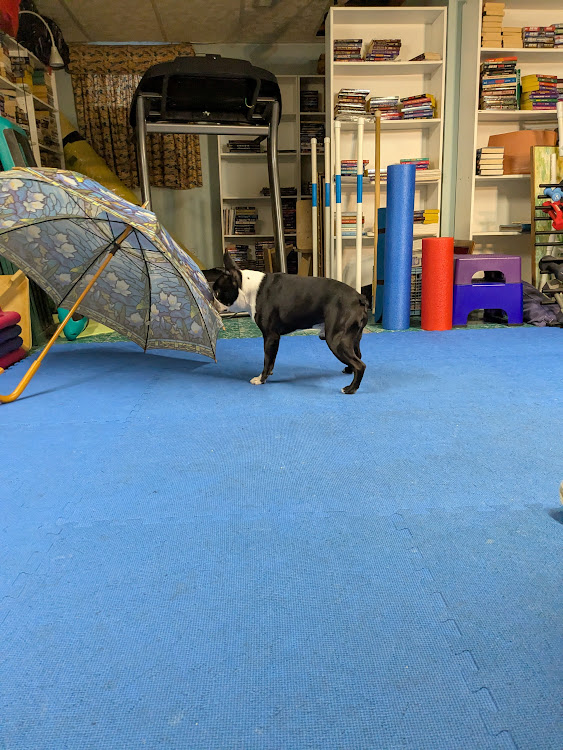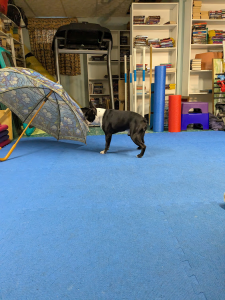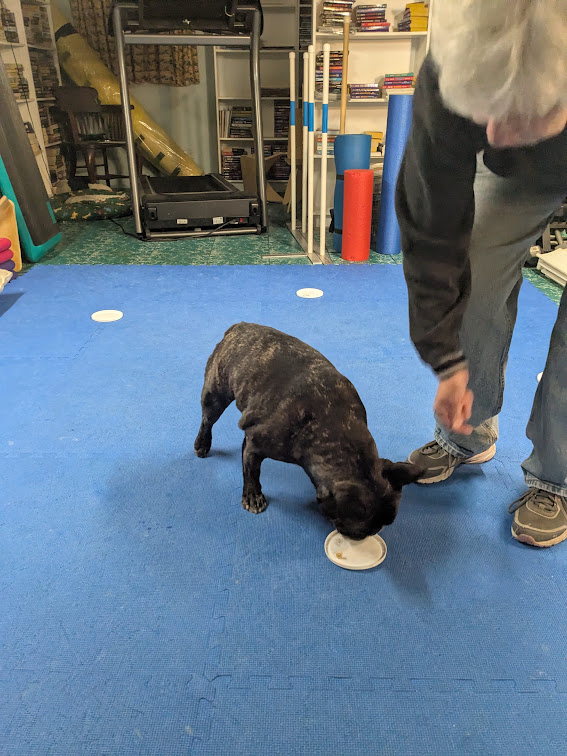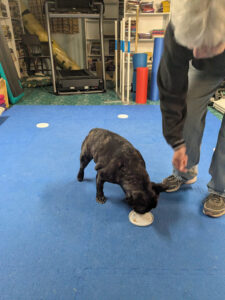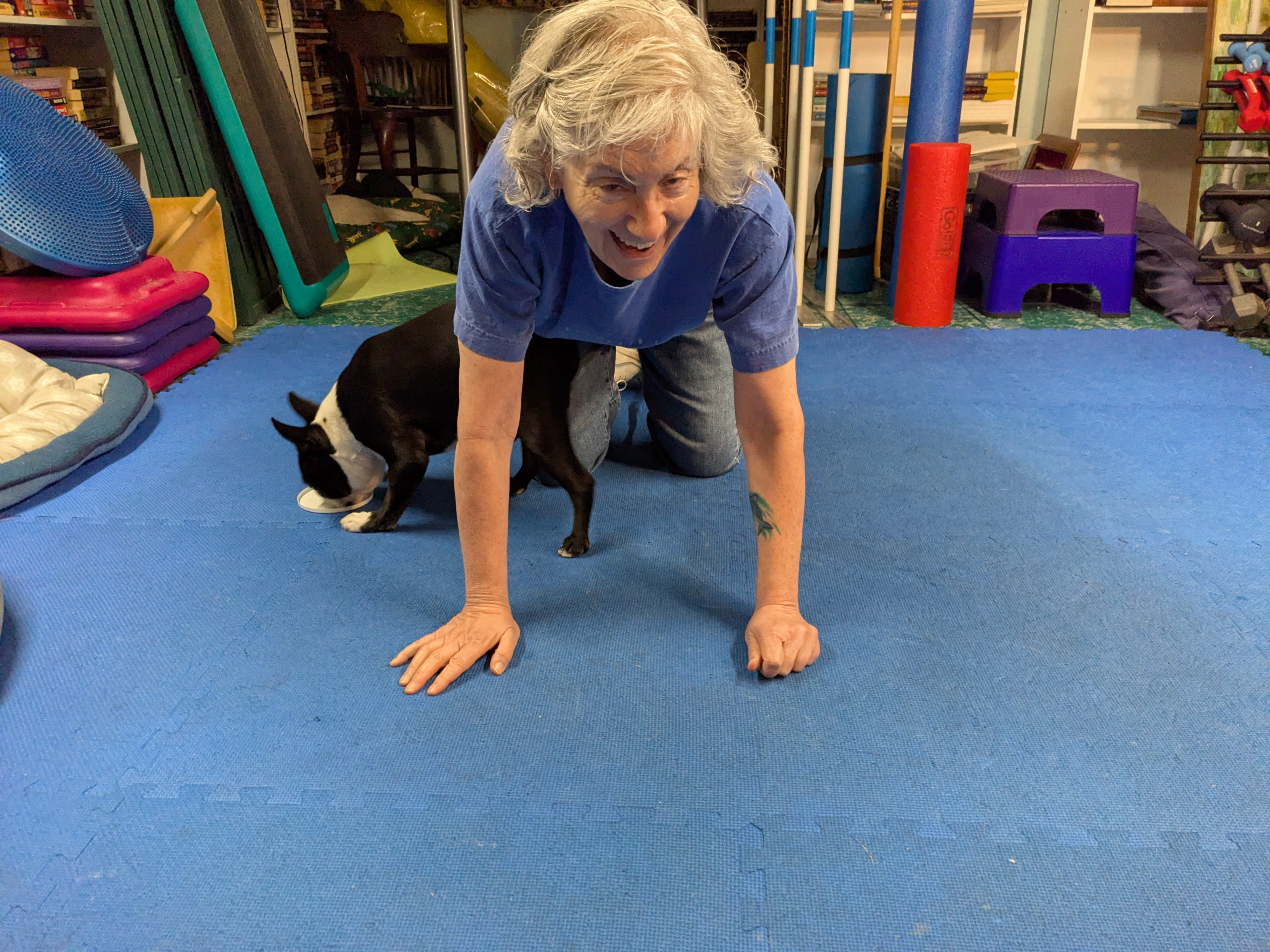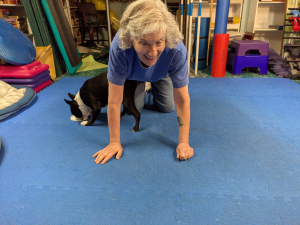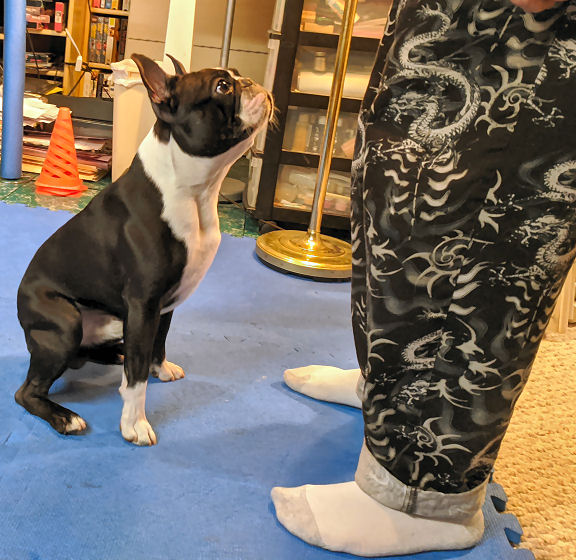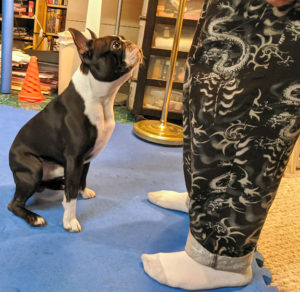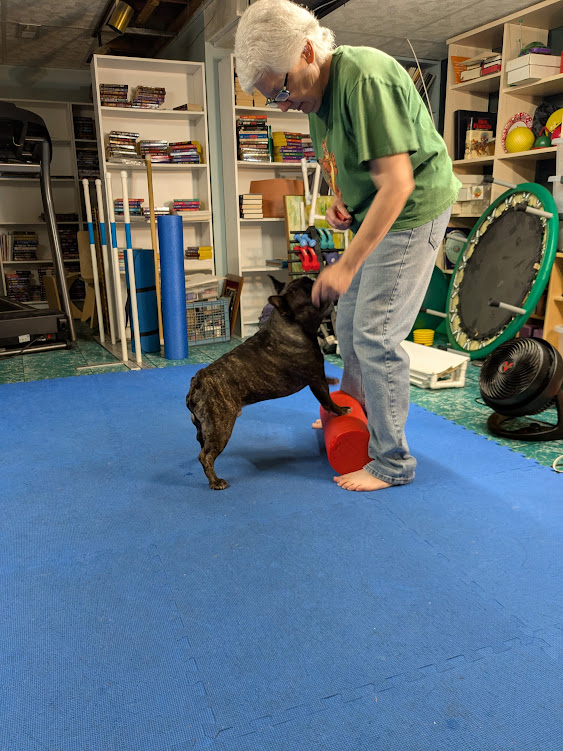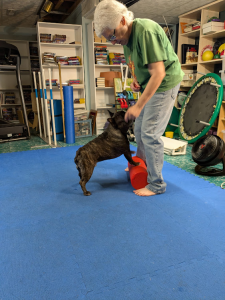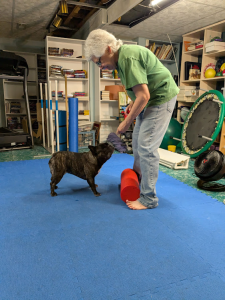According to the search engine that knows everything and tells all, dressage is “a classical training system that develops a horse’s balance, flexibility, and obedience to create a partnership where the horse responds to the rider’s subtle cues with harmony, confidence, and attentiveness.”
“Harmony, confidence, and attentiveness.” Wouldn’t you love to describe your relationship with your dog that way? You can get there. The recipe is simple – train in brief sessions with intense focus. Fancy footwork, like “Sideways,” “Back,” “Spin!” and even “Stomp!” parallel dressage. These tiny little behaviors zero in on small things and add up to so much more. The result is knowing how to communicate with your dog through words, motions, and actions.
Step at a time
In day-to-day life there may not be much call for doggy dressage. But it’s fun and useful for Rally or Trick Dog competition and titles. It’s also a great way to teach your dog body awareness and be sure they’re using all the muscle groups in their legs. Establishing a habit of lifelong fitness for your dog will help as they age. After all, Newton’s First Law of Motion tells us: “A body in motion tends to stay in motion.” Isn’t that what we all want, for ourselves and our dogs?
The first part of Doggy Dressage was last week’s 2-Minute Tip, “Sideways.” This week we’re going to go over a couple different ways to teach your dog “Back Up!”
Back Up!
If you already know the training game “Whatcha Gonna Do?” you have the tools in place for starting “Back Up!” If not, you should. It’s the best impulse control game we know. But don’t worry. We’ll muddle through without and jump into “Back Up!”
Sit on the floor with a bunch of treats your dog can’t get to. When your dog is in front of you, toss a treat between their front legs, aiming for the floor just under their chest. When the dog reaches down to get it, they’ll back up to get it. Say “Good Back!” or “That’s Back!” etc. Make sure they hear the word as soon as they act it out. Do it again. A single session may be about 10 treats gently thrown under the dog.
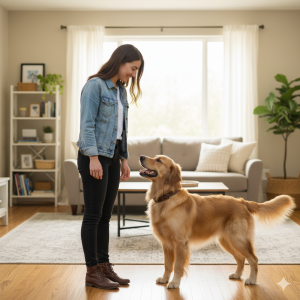
If your dog aces this and is already across the room, backwards, get them to come back by offering a palm to play “Touch!”
Most dogs take a few sessions to catch on. That’s okay. This method of teaching “Back Up!” is preferred because it’s not dependent on you moving with the dog. The dog is taking independent action and being rewarded for it. You can ultimately transition to a standing position.
Another way
The way most people teach their dogs to “Back Up!” is using a wall. Stand with the wall at your side (either side is fine) and the dog between you and the wall, facing the same way you are.
With the hand closest to the dog, hold a treat at a level with the dog’s muzzle and move it straight back, moving your feet along with the backwards motion. At first you’ll only be looking for the slightest backward motion, just a few inches. Give your dog the words “Good Back!” as they’re moving that way. Try to hang onto the treat (yes, your dog is probably nibbling your hand) until the dog has actually moved a bit back.
Gradually increase the distance “Back!” your dog goes before being rewarded. When you switch from luring to rewarding this behavior, use the same arm position to cue your dog. Please don’t flutter your hand in the dog’s face. It’s just annoying to the dog and anyone watching.
More fancy footwork ahead
We hope you’ll tune in next week for one of our favorite stupid pet tricks – the Stomp!

